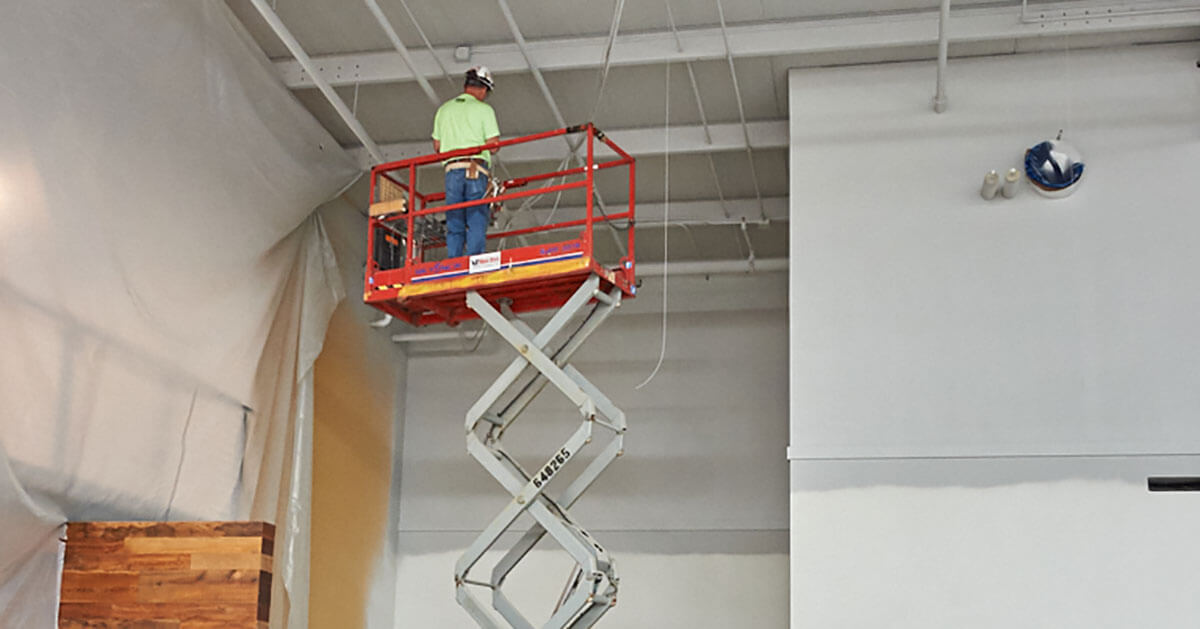Safely using scissor lifts
Date Posted: 09/23/2019

Working at heights is always dangerous, and becomes even more dangerous when employees are elevated in equipment that can move. For employees using scissor lifts, most operating rules start with "do not" (actually, a lot of OSHA rules start with "do not"). Safety, however, depends not only on avoiding unsafe actions, but on following safe practices. Employees may need a list of "always do" items along with the prohibited "never do" items.
Always inspect before use
Workers must be trained to use scissor lifts, and must demonstrate that they can use the equipment properly. This includes properly maintaining the equipment and following the manufacturer's instructions.
A scissor lift is not a powered industrial truck according to OSHA, but a pre-use inspection (similar to pre-shift forklift inspections) should be conducted. Remember that OSHA even requires employees to inspect stepladders before the first use on each shift, so requiring your employees inspect scissor lifts makes sense.
They'll need training on how to do that, and what to look for. The manufacturer may recommend things like testing controls, ensuring that guardrail systems are functioning, and verifying that brakes are operating properly before each use. Employees should always report any defects or maintenance needs.
Always use equipment safely
Workers should understand all rules for safe operation, but as noted, these rules might be better presented as a "to do" list rather than a "never do" list. For example, rather than telling workers to never move the lift while in an elevated position, offer a list of operating rules like, "Always lower the lift before moving to a new work area."
Other "to do" operating rules might include:
- Always evaluate the work area for possible hazards.
- Verify that the work surface is stable and free from objects that could affect stability.
- Check the wind speed to ensure that it is not excessive.
- Use any required personal protective equipment.
Most injuries and fatalities involving scissor lifts were the result of employers not addressing matters like fall protection, stabilization, or positioning (such as working near power lines). By providing employees a list of things to always check before starting work, they’ll have positive steps to follow. This may better encourage them to follow safe work practices, rather than expecting them to go through a negative checklist of things to avoid.
How Safety Management Suite Can Help
E-mail Newsletter
Sign up to receive the weekly EHS Insider email newsletter for safety articles, news headlines, regulatory alerts, industry events, webcasts, and more.